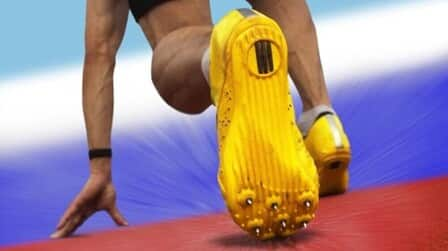People who first take up running as a daily exercise may engage in issues such as sore muscles, side stitches, or stomach problems. These issues are raised because many runners when doing the exercise don't apply the techniques carefully. Keeping the appropriate form while running is also important as it prevents you from backache. However, this matter is yet to be solved.
In this article, we will be answering questions on how to run slow with good form, including the problem caused by improper form and how to resolve them.
1. Common Problems You May Engage In Due To Incorrect Running Form

Joint and knee problems
It is easy for anyone to face the risk of joint or knee pain, especially for beginning runners. This is usually caused by improper leg movement and bodyweight handling throughout the running process. When treating this pain, you may need some supporters to reduce the body weight pressure on the joints or knees.
Backache
Backache is another condition you easily engage in as a human's posture affects the spinal cords significantly. Backache not only occurs when we carry the sport techniques inappropriately but also in our daily activities such as sitting. The smallest mistake happening from time to time can cause remarkable pain to your spinal cord. As a result, it takes you lots of money and time for treatment
Torn Or Sore Muscles
It is understandable for this to happen if your running techniques and form are incorrect for a long while. The muscles are affected until a level of vulnerability, then they may get sore, or worse - torn. This condition takes you along to recover and longer to get back to your former activity levels.
2. Mistakes You May Get While Running

Whether you do slow, fast, or marathon running, make sure that you do all the skills correctly. It will barely cause you any difficulty at the beginning since your body hasn't been familiar with the wrong forms, which is easy to fix any mistakes. Here are some popular mistakes that often occur while you run.
Too low or high arm swing frequency
Arm swing is often neglected because many people assume that it won't affect their running form. Nonetheless, this claim is’t true. Indeed, arm swing impacts your lower body movement. If you have zero rates of arm swing frequency while running, your shoulders and arms will end up being inward curved, while your body lacks the capability of moving backward comfortably.
In the opposite case, you do too many arm swings as you run, your lower body movement will engage in difficulties, and the running process becomes less pleasant as it should be. Remember, you run on your feet, not your arms.
Inadequate Cadence Occurrence

Inadequate cadence is not a huge problem, though it does several harm. There is one rule to bear in your mind that you need to maintain your cadence in one run. Sudden change in cadence can cause body reactions that are not so delightful. This also leads to changes in running forms as we suddenly stop or speed up. Cadence, additionally, if messed up, can lead to other breathing issues, such as breathing shortness.
Overstriding As You Run
Many people assume that the longer your running step is, the more benefits you will get from it. They believe that if they have longer steps, their feet, muscles, and joints get more relaxation, stretching, and motivation.
Overstriding is that you take steps too high off the ground and create a harsh landing afterward. It can partly come from reduced hip flexion. This is often seen in athletes as they have the skills needed. They run with reduced hip flexion because it allows them to do an overstride.
3. How To Run Slow With A Proper Form?

Since we have pointed out some problems and mistakes you may make while running, in this section, there will be solutions on how to run slowly in a good form.
Check Your Form First
To get in the correct form, we should know what our current form is and what mistakes we are making. As a result, after getting what flaws are existing, we will easily fix our form into a correct one, which makes the running process more relevant and beneficial to our body.
Checking your form most simply is to ask somebody, a friend, for instance, to take a photo of you running. If you want to check more detailedly, ask someone to record a few seconds of your running. Through images and videos, you will find out your mistakes in no time. In case you cannot ask anyone as you run alone, run in front of a mirror at home and record yourself at the same time. This method is the same as the mentioned one.
Do Not Look Down
Looking downturns your neck and shoulder in improper form. This also creates neck pain and shoulder curves. Ensure that you look forwards when running, keep your neck and spinal cord in a straight line. This will prevent you from any neck-shoulder pain in the future. Apart from that, looking at where you are running to is of the same importance, so why head down instead of up?
Adjust Your Arm Swing Frequency
Arm swing frequency is mentioned in the last part. Do not swing your arm too often or do not swing at all. Since we are running slow, the first thing is to open up your shoulder for better posture. Then, for the arms, swing them naturally with a similar pace as your steps. Also, remember to make a sufficient force instead of too hard. Arm swing is essential when running. Without the arm swing, your running process is less effective, and the upper body does not have the chance for being active as much as the lower body. Consequently, it would make a difference between the two parts, and your running is not as elevated as expected.
Add Up Your Straight Line

This is probably the most important solution to make your form better whether in fast or slow running. When running, make these points a straight line: neck - spinal cord - hip - knee - heel. These parts of your body should be lining up to one another. This makes the standard posture while running, according to many experts in the field of sport in general, and running specifically. The straight line of the neck, spinal cord, hip, knee, and heel would likely prevent you from getting neck, shoulder curves, or backache. Besides, since we are running slowly, we would not generate so much force in the hip section, so we should focus on other parts to make the best running form.
Take Some Warm-Up Before Running
Like any other sport, slow running needs warm-ups. Hence, it is not a bad idea to warm up before and stretch after the run. These two help your muscles relax and prepare your body for the exercise ahead. It encourages your body to perform better. Moreover, stretching makes you more flexible, and this can come in handy for those runners with stiff or intense upper body parts.
Conclusion
This article has shown you the information about mistakes and problems runners usually make while doing the exercise. The major issues seen are joint and knee pain, backache, and shortness of breath. The solutions to this are working on your posture, and warming your body up before running. As your body is prepared for the run ahead, it would put on a better performance and retain stability more effectively.













